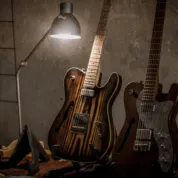
I can’t begin to describe how happy I was when I found out I’d be writing about the 10 best guitars of all time. Almost immediately, that elation was followed by a sense of dread. I mean, how do you just pick 10? If it were up to me, I’d write about the top 100 best guitars of all time and it still wouldn’t be enough coverage.
So, in order to accomplish this task, we’re going to judge the guitar by its reputation and iconic status. My judgment alone shouldn’t be the basis for why it’s one of the best. Other accomplished guitarists should sing their praises as well.
After that, my personal experience with the guitar will weigh in, covering aspects like how it feels, sounds, looks, and weighs.
And finally, the most esoteric quality of all, guitar mojo. Every guitarist knows this. It’s how the guitar feels in your hand. The feeling of belonging. That indescribable feeling when you know it's just right. The melding of man and instrument into one.
The 10 Best Guitars of All Time
EDITOR'S NOTE: It's important to mention that most of the guitars in this top 10 list aren't stock options readily available on the market. More often than not, they're the result of heavy customization by the owners or they're high-priced artist signature guitars that may not fit into an average Joe's budget.
10. Steinberger Spirit GT Pro
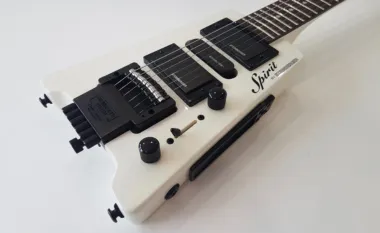
This list is breaking my heart outright.
If I had it my way, the Steinberger Spirit GT Pro would be on top of my list. But then again, this is a 10 Best Guitars of All Time List and not Chester’s ultimate list of guitars he wants for Christmas. (hint hint, wink wink, nudge nudge)
The Steinberger Spirit GT Pro is highly portable, has an iconic shape, and is an extremely capable instrument for all types of playing situations. This guitar found its way into the hands of guitar heroes from the 80s and 90s. Eddie Van Halen is the most notable one. Vito Bratta also played a Steinberger but he had a different model.
This is a fun instrument that you can play the most amazing things on, strut around the stage with, hop, run, do whatever you want without it impeding your movements in anyway.
One potential downside to the Spirit GT-PRO is the requirement of using double ball-end strings. This may not appeal to every guitarist, though it can be addressed with aftermarket parts that allow for the use of regular strings. Another factor is the guitar's unique shape. While some may find it appealing, it does require some acclimation, and that may not happen for everyone.
The Steinberger Spirit GT Pro is a great guitar for onstage or offstage use. It is also a highly portable guitar and is probably the precursor to what we call traveler guitars these days. It is one guitar I’m never letting go of.
9. Washburn N4
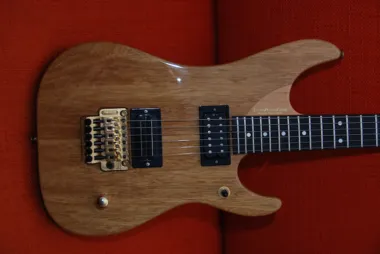
The Washburn N4 is an example of a guitar that almost immediately evokes images of the player who popularized it. When you pick one up, you immediately go into that headspace where you absolutely have to play a Nuno Bettencourt lick or two. The tone may not be the same, but with enough practice, you can approach that sonic level that Nuno is using as a platform.
At first glance, the Washburn N4 is unapologetically a Stratocaster. A closer look will reveal it has a longer and narrower body, as if someone took a Stratocaster and stretched it out like taffy. What makes it completely different from a standard Stratocaster is its 24-fret neck and reverse headstock.
The Washburn N4 is a very rugged, highly-reliable tone-smith’s tool that opens up a world of possibilities. Anyone can pick up a Washburn N4, play it and immediately sound good. With enough practice, you can start flying over the fretboard with a Nuno-esque fashion.
I believe it’s the neck that really makes this a wonderful instrument. It’s definitely a fast neck with a very deep body cut that allows ease of access to the highest frets. That and the Buzz Feiten Tuning system plus Bill Lawrence and Seymour Duncan pickups really sets this guitar apart from all the rest.
I love this guitar. The reason why it's this low on my list is because of limited appeal. Let’s be honest, those of us investing in a Washburn N4 are almost always fans of Nuno Bettencourt first, and secondly, are fortunate enough to afford the $3000 price tag.
8. EVH Wolfgang Special

There was a time when Peavey was all the rage. That was up until 2004, when Eddie Van Halen decided to move on, and left Peavey in the dust. A casualty of war despite the amicable split from the numero uno guitar virtuoso. These days, Eddie Van Halen’s guitar is marketed under Fender’s EVH brand. It still looks like a Peavey Wolfgang to me, though. The headstock’s just a little bit different. In fact, I don’t really like the new headstock.
But who can deny the absolute value of this guitar when it comes to sound and build quality? It’s Eddie man! He rocks (excuse me, rocked) these guitars onstage with the rest of the Van Halen crew.
I’ve only had the privilege to hold and test one once and I sounded nothing like Eddie Van Halen. But you could hear the potential of sounding just as great as he was by strumming it. Plugged through the same equipment and with enough practice, you probably could reach his level of virtuosity with the EVH Wolfgang Special.
Although Peavey was able to retain the rights to sell almost the same guitar, they fell short in securing the name that could have significantly boosted the instrument's sales. One thing I must point out, however, is that Peavey's original headstock (which they've maintained) outperforms the one marketed by Fender. The headstock on the EVH Wolfgang Special that Fender promotes could be put to excellent use as a back scratcher.
Oh, dear.
Suddenly, I have this nagging itch on my back.
7. Parker Fly

I absolutely loved the Parker Fly series. It looked weird, funky, and outrageous… And that pissed off a lot of people! But when they heard the sounds coming out of that oddball, oh how the tides turned.
Sadly, the price was very restrictive at the time it came out and very few were able to afford this guitar. Add the fact that it had very polarizing qualities based on looks alone made it a guitar that was doomed to become a collector’s issue due to its limited run. But no one could deny the sweet sounds this guitar could emit. Parker Fly was designed by Ken Parker and equipped with Fishman pickups that really made the guitar sing. The sustain was also unbelievable on that instrument.
Parker has long discontinued the manufacturing of the Parker Fly but I bet if they ever do come out with something new a lot of Parker Fly fans, myself included, are going to come knocking on their door.
6. Gibson Les Paul

I never really expected the Gibson Les Paul to land this low on my list. To me, this is the ultimate guitar. It looks cool, sounds cool, has been featured on tons of classic albums and all my heroes use it. In fact, I actually play one onstage.
Gibson Les Pauls equipped with PAFs sound great alone or in the mix. They just seem to have enough warmth and bite to really get the crowd going. I usually play mine straight to the amplifier but adding a few pedals along the way can really enhance its tone.
So, if I like it so much, why’d it end up this low on my own list?
Well, for starters, Les Pauls have major tuning issues. You can correct this by slapping on locking tuners (major no-no for purists) and having it intonated by a certified luthier but you’ll eventually notice that the G string always seems to slip. I don’t know if this is unique to my instrument or my tendency to bend that particular string but each and every Les Paul I’ve handled have demonstrated this flaw. But if you don’t mind tuning every song or two, then the Les Paul is for you.
Next is the sustain, there’s a design flaw on Gibson Les Pauls that limits the length of sustain on these guitars in stock form. You can lengthen the sustain by adding a little vibrato through your fingers or changing the pickups.
But my biggest gripe with a Les Paul is the weight. These things weigh a ton. Granted, there have been improvements made along the way throughout the years but to me it still feels like you’re strapping on a baby hippo whenever you bring one onstage.
But if you can get past all of that, oh boy does this baby hippo sing!
5. Brian May’s Red Special

Alright, so we said no artist signature specials right? But, this one is unique because of the fact that Brian May and his dad made a guitar specifically for him and no one else. It took several decades before anyone had the guts to take Brian May’s guitar, copy it down to the last spec and mass produce it for all of the Brian May wannabe’s in the world.
I’ve only been able to play a Brian May Red Special copy from Burns. This was when Brian May allowed the guitar company to mass produce his guitars. He eventually ended that contract and came up with his own company which produces his guitars specifically.
The Burns Brian May Red Special was a good attempt at recreating the magical instrument, sadly, it still fell short. Brian May’s original guitar was designed to feedback. The Burns copy tried to emulate that but also ended up rather difficult to handle. Or maybe I just didn’t have the skills to wield it properly yet. The feel of the guitar was probably near to the actual Red Special. I’ll never really know until I finally have the privilege to hold Brian May’s actual guitar.
All I can say is this: for a replica, the Burns Brian May Red Special sounded great, played exceptionally well and felt just right in my hands. That and my admiration for Brian May is the reason why it’s higher up on the list than the rest of the best guitars of all time.
4. Fender Stratocaster
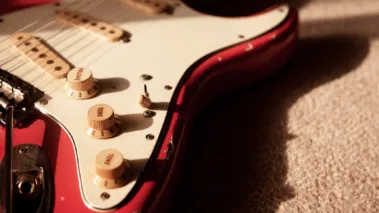
Yeah, yeah, even I am surprised by this choice. To be quite honest, I never really liked how the Fender Stratocaster looked. As a Les Paul fan, I gravitate more towards the Telecaster. But it’s not only about looks when it comes to the best guitars of all time.
Despite my biases, a Stratocaster is still a Stratocaster and nothing can really come close to its unmistakably unique sound. Leo got it right when he made this timeless classic. Three single coil pickups are more than enough to do the job.
And this simple setup has spawned countless hits on the radio. Many rockstars have taken the Stratocaster’s simple layout, modded it or kept it stock and made a name for themselves. And its not like the Fender Stratocaster has remained static in its design. There are countless improvements done to this deceptively simple looking guitar that the vast majority of guitarists have ignored. If I were to list the number of artists who swear by the Fender brand and model, I’d need an entirely new article for it.
The familiar shape, vast array of pickup combinations, easy-to-play neck, reasonable weight and wide range of prices to pick from make the Fender Stratocaster a highly sought after guitar for guitarists and collectors of all playing levels. The Fender Strat, it just simply works.
3. Ibanez JEM

Steve Vai, Joe Satriani, Paul Gilbert, Herman Li, Tim Henson these are just some of the names associated with the brand. Obviously, I’d have to pick the Jem series as the best the brand has to offer because Ibanez makes superstrats the right way.
Most shredders, are going to swear by this brand as the ultimate tool to start with, tour with, or simply just fool around with. Granted, there are more shredder targeted guitars these days but Ibanez’s Jem series remains high on that list of best guitars of all time for beginners, intermediate players and seasoned pros.
Another great thing about Ibanez guitars is they have entries for best electric guitar under $300 to best electric guitar under $700 categories.
Steve Vai’s Jem series guitars were the absolute best when they first came out. The first reason why I was so sold onto buying the guitar was because of the monkey grip. Yeah, the one non-musical aspect of the guitar was the main reason why I bought one back in the day. The sound is a given. It sounded absolutely amazing! Looking back, there were some tuning and intonation issues but they weren’t really deal breakers at that time. The ultimate kicker was the tree of life inlay on the fretboard. That was the first time I’d seen anything like that on a guitar and I absolutely had to have one.
Delusions of becoming the next Steve Vai accompanies the purchase of this guitar so buyer beware. If you’re set on buying this particular guitar, you better have the dedication to practice at least 6 hours a day to deserve this instrument.
2. Mooer GTRS P800
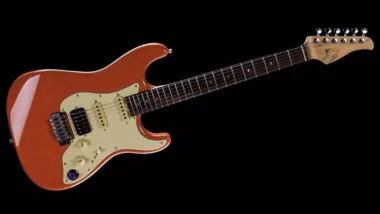
The Mooer GTRS Pro, is the future.
Yeah, I said it.
Let’s revisit this claim a decade from now.
And how could "the future" not be one of the best guitars of all time? I mean, as a working musician, trimming your gear down to the bare essentials is … er… essential. Do you really want to lug a ton of gear up and down those back stairs to perform for an hour and a half? With the GTRS P800, you can say goodbye to back problems and strained muscles. All you need is this guitar, a cable, and an amp and you’re good to go. Add the footswitch and you’re almost gig ready. If you’re a bedroom guitar player, all you’ll need is a pair of headphones and plug it into the guitar and you’ll be jamming with yourself for hours.
The GTRS P800, takes out the need to have a load of gadgets because it already has a basic onboard processor for switching through presets. You can also connect to an android or iPhone device to access more effects and presets. You can program a drum machine, a metronome, a tuner, and all the other good stuff guitarists need to have fun sans the participation of the whole band.
Did I mention you also have a looper thrown into the mix? Now if that doesn’t get your motivation up and running, then I don’t know what will.
To sum it all up, the GTRS P800 is a guitar that frees you from common guitarist issues involving lots of gear to bring along just to play gigs or by yourself. There’s just something about the sound that’s a bit off which knocked it down to second place for me.
Don’t get me wrong, this is a solidly built guitar. The pickups alone are worth writing home about. Add the locking tuners and you have a guitar that’s obviously been well thought out.
Last but not least, the GTRS P800 is priced under $1000 making it a very accessible and attainable guitar.
1. PRS Silver Sky SE

Finally, we get to the top guitar on my list: the PRS Silver Sky SE.
I’ll be honest with you: I was one of those who burst out laughing when I first saw it online.
The PRS Silver Sky is a fairly new entry into the PRS stable of guitars and it has already garnered a few criticisms along the way simply because (a) it is John Mayer’s signature guitar and (b) it looks too much like a Stratocaster with an entirely new headstock. Most Fender knock off companies already do this with their Strat offerings. So what makes the PRS Silver Sky SE unique?
To be honest, I don’t know. But one thing I do know is that when you see one in person, hold one, and actually play one, every doubt you had melts away as you think to yourself “Oh yeah…. Now I get it!”
I especially like the use of a reverse headstock on the Silver Sky SE. This is a very minor aesthetic detail and to be honest, I didn’t notice until after a few days. It just looked different to me but I couldn’t place my finger on it until I placed it beside another PRS Guitar. That’s when I saw it.
I could have picked the slightly more pricey Silver Sky USA model, but from everything I’ve heard there’s not enough difference between the two to justify the USA model's $2400 price tag. However, if budget isn't a concern for you, the USA version has better electronics, hardware, a better nut, and a bit thicker neck. The SE version however comes with a two-way tremolo bridge.
Sound-wise, the PRS Silver Sky sounds to me like a Strat. Here's a demo for you to judge for yourself...
I know, it sounds sacrilegious but John Mayer did prefer Fender Strats throughout his career. Naturally, the sound he’s leaning towards is that of a Stratocaster. The only reason why he’s with PRS is because Fender couldn’t keep up with his demands. That was a major loss for Fender losing a talented endorser like Mayer, and a great addition to PRS’ line of artist signature guitars and one of the best guitars of all time.
If I had the money, I’m getting both the SE and USA models!
Best Guitars by Genre
Best Guitar for Metal

Metal Pick: Wylde Audio Viking Flying V
My answer for the best electric guitar for metal is going to come from Zakk Wylde’s line of guitars from Schecter. I’m talking about the Wylde Audio stable of guitars, an obvious for me among the best guitars of all time. Each one is built exactly to his standards and they look awesome.
I’d have to say they look like Gibson’s viking cousins if guitars were related in that manner. And the most metal of all he’s offering is the Viking Flying V. For me, that's as metal as it gets!
Best Guitar for Jazz
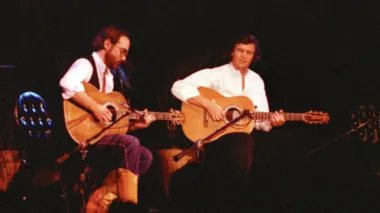
Jazz Pick: The ESP AS-1FR
This would be an interesting spot to introduce an acoustic guitar, as many great classical and jazz-fusion guitarists like Al Dimeola and John McLaughlin made waves with Gibson J-200 and nylon string acoustic guitars, that could be considered among the best guitars of all time. And coming from a metal background, I’d like to pick Alex Skolnick’s signature guitar. He is a metal guitar god but also a fantastic jazz player. He's also successfully melded the two together.
But I’m going with the ESP AS-1FR as the best electric guitar for Jazz. Jazz with a dash of metal thrown in to be exact.
Other contenders for this position are: the Epiphone ES-335 which looks and sounds like what a proper electric guitar for jazz looks like and a good old American Original Fender Telecaster from the 60s with those F holes on the body.
Best Guitar for Country
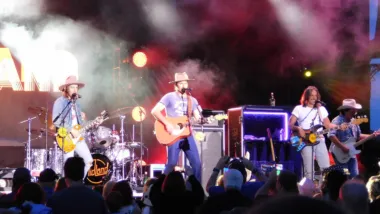
Country Pick: The Gibson Acoustic J-45
When it comes to country music, one name that stands out is the Gibson Acoustic J-45. Even though it's the only acoustic guitar on our list, its rich history in the country genre makes it well worth it. This model has been a staple in the hands of country music artists since its introduction in 1942, with tone quality and playability that make it a classic choice.
Its balanced and warm tonality is perfect for that Country or Honky Tonk twang, and its round-shoulder dreadnought design provides a comfortable playing experience. Many call the J-45 'The Workhorse', due to its reliability and resilience, two qualities every country guitarist values.
Other guitars worthy of a best guitars of all time list are the Fender Telecaster with its bright and twangy sound, which has been a favorite for country rockers, and the Gretsch White Falcon, a guitar that combines style and substance, known for its vibrant tone and striking visual appeal.
Best Guitars by Budget
Best Guitars under $500
The Yamaha Revstar RSE20, Epiphone Les Paul Junior, and Squier Contemporary Telecaster, are three great guitars that belong among the best guitars of all time, and at a price point and you can gig with without any problem. There might be some minor quality control issues that you’ll spot with these guitars if you really look thoroughly but they’re very easy to miss.
Swap the pickups for better ones and upgrade a little bit of your hardware, and you'll have a guitar that’s near what you’d get for $1000. Of course if you're not careful your upgrades could make up that $500 difference, so make sure you review your options thoroughly.
Best Guitars under $300
When I was just starting out with my guitar collection, I was always on the lookout for a bargain. It was more of a quantity over quality type of thing. I just had to have a lot of guitars so I could have more bragging rights.
Those days are gone. My taste has obviously changed and I now value the quality of a guitar over how many guitars I actually own.
That doesn’t mean I’m gonna pass up on a good bargain though. The Squier Affinity Stratocaster, Epiphone Les Paul Vintage Edition, and Yamaha Pacifica are the best you can get for less than $300.
Best Guitar for Small Hands or Beginners
Small Hands Pick: The Epiphone Express or Power Player series
I wasn’t born with fingers as long as Paul Gilbert’s so naturally, playing over extended scale patterns is an athletic feat for me. It requires a lot of jumping from one end of the neck to the next just to reach certain notes. To solve this, I have resorted to using shorter scale guitars. I’ve actually grown fond of my Epiphone Express which I use for practice and onstage. Had this guitar come out during my formative years, I would’ve spent more time practicing than griping about skipping along the fretboard.
The Express has been discontinued as far as I know and in its place, Epiphone has released the Power Player series which have better electronics and playability so as to keep kids inspired musically. Squier and Ibanez also have shorter scale guitars to offer which is targeted to be the best electric guitar for beginners with small hands.
Final Thoughts
Exploring the best guitars of all time is an ever-evolving journey. Each guitar, whether it's the PRS Silver Sky SE or Mooer GTRS P800, brings with it a unique personality that resonates a little differently with each musician. These aren't just instruments, they're partners in the creative process, and extensions of the musician's thoughts and emotions.
As the final note to this comprehensive guitar guide, remember, the true beauty of an instrument doesn't lie in its price tag or the fame of its endorsers, but rather the connection you share with it – the intangible 'guitar mojo' we discussed. This connection elevates a guitar from being a mere instrument to a transcendent entity. So, while we can guide you towards which models are guitarists respect, this is just a starting point. The ultimate 'best guitar of all time' for you is the one that resonates with you, the one that feels like an extension of yourself when you play. And that's something that no article can rank.
And if you've enjoyed this article, please check out our article on the Best Bass Guitar of All Time, and our entire section of music gear reviews and advice.


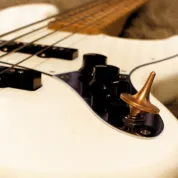
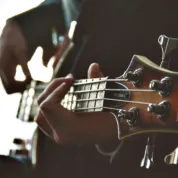



Leave a Reply!
I get having the prs on here, but #1?! That sounds a bit extreme.
I play Epihone and love but this one is very good too. Good list.
Thanks!
I LOVE my GTRS P-800. The onboard processor and smartphone connectivity (which I never thought I'd use) make it so versatile and convenient.